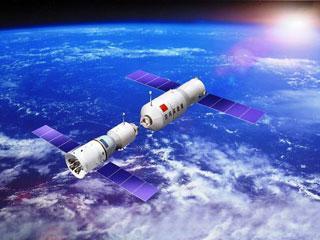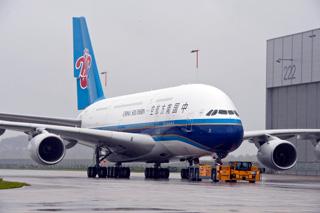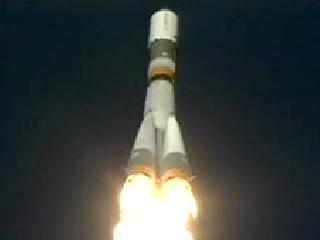
An artistic illustration of China's first space station module Tiangong-1. Photo: China Manned Space Engineering Office.
BEIJING (PTI): Bracing up to launch a major space module Tuesday to experiment with first docking system of its space station to catch up with US and Russia, China Monday said it would launch its second manned space mission next year.
China is going to conduct another manned space mission by 2012, Wu Ping, spokesperson of the China manned space programme told media at the Jiuquan satellite launch centre located in Gobi desert.
China plans to launch in 2012 spaceships Shenzhou-9 and Shenzhou-10, which are expected to dock with China's first space lab module, Tiangong-1, (Heavenly Palace) launched last month.
She said Shenzhou-8, the unmanned test module would launched early morning Tuesday to dock with Tiangong-1.
"At least one mission of the two (Shenzhou-9 and Shenzhou-10) will be manned," Wu said.
The crew members have already been selected for the possible space docking mission in 2012 and are being trained for manual docking skills, Wu said.
Before the manned flight, China has to test the knowhow on space docking by launching the unmanned Shenzhou-8 Tuesday and connecting it with the target orbiter Tiangong-1.
She said the maneuver to connect the two modules could be risky and fraught with dangers.
"It is fairly difficult and risky to link up two vehicles travelling at high speeds in orbit, with a margin of error of no more than 20 centimetres," Wu said.
There were incidents of collisions between space vehicles in the early days of docking attempts, and recent docking missions involving the International Space Station did not always run smoothly, Wu said.
Nearly 100 contingency plans have been prepared and exercised to address problems that may occur during the mission, Wu said, adding that all people involved in the mission are confident about a successful docking.
"Although the Shenzhou-8 is unmanned, we equip the spacecraft with devices recording real images and mechanical parameters during its flight, both of which are vital to future manned missions," Wu said.
Significantly the Chinese and German space scientists will conduct different experiments on Shenzhou-8.
"Chinese and German scientists will conduct 17 research programmes aboard the Shenzhou-8 spacecraft," Wu said.
"Among the research programmes, 10 will be dominated by China and six by Germany and the two sides will jointly carry out one programme.
"It is the first time for China's manned space programme to carry out international cooperation in the field of space life science," Wu said.
She said the experiments are of great significance in promoting the study and development of micro gravity science and space life science.
China which began experimental rocket launches since 1960, launched its first satellite in 1970 followed up with first manned mission in 2003, when Shenzhou-5 module carried Yang Liwei, then 38, on board and returned after 21 hours and 14 trips around the Earth.
On September 25, 2008, China used a Long March-2F rocket to lift the spacecraft Shenzhou-7 into space from Jiuquan Satellite Launch Center.
Zhai Zhigang successfully completed China's first-eve space walk.
China became the third country in the world to conduct extravehicular activity in space, following the Soviet Union and US.
Last year a Long March-3C carried Chang'e-2 the country's second lunar probe, into space sending for the first time the satellite directly into lunar transfer orbit.
Last month China launched its first space lab module Tiangong-1, which aims to test the first space docking with Shenzhou-8, paving the way for China to operate a permanent space station around 2020, making it the third country after US and Russia to develop space rendezvous technology.
The space station will be considerably smaller than the current 450-ton International Space Station Mir being jointly managed by US and Russia.
It will last for around a decade and support three astronauts working on micro gravity science, space radiation biology and astronomy.
Though very successful in the recent years, China's space programme suffered a setback last month when its Long March rocket failed to put a satellite in a designated orbit but it was subsequently rectified.
This is the first time the Long March II-C rocket, regarded as the trusted war horse of Chinese space programme has failed after 35 successful launches.
It is second time that China failed to put its satellite in proper orbit since 1996 after it developed its space applications modeled on the Russian technology.
China has expanded its space programme at a rapid pace in the recent months.
This year alone it plans to launch 25 satellites and had also launched a communication satellite for its close ally Pakistan.
 Previous Article
Previous Article Next Article
Next Article












The Indian Air Force, in its flight trials evaluation report submitted before the Defence Ministry l..
view articleAn insight into the Medium Multi-Role Combat Aircraft competition...
view articleSky enthusiasts can now spot the International Space Station (ISS) commanded by Indian-American astr..
view article